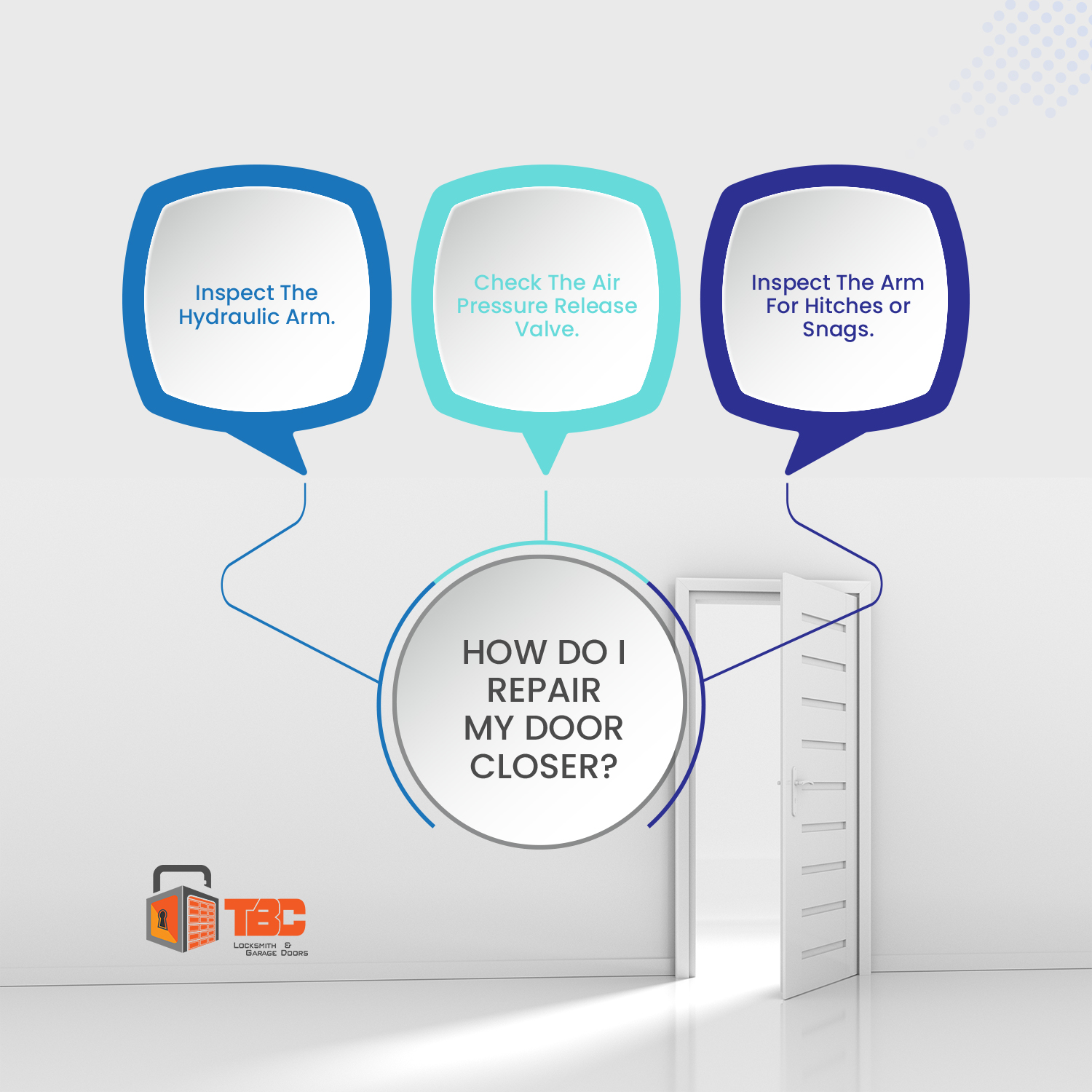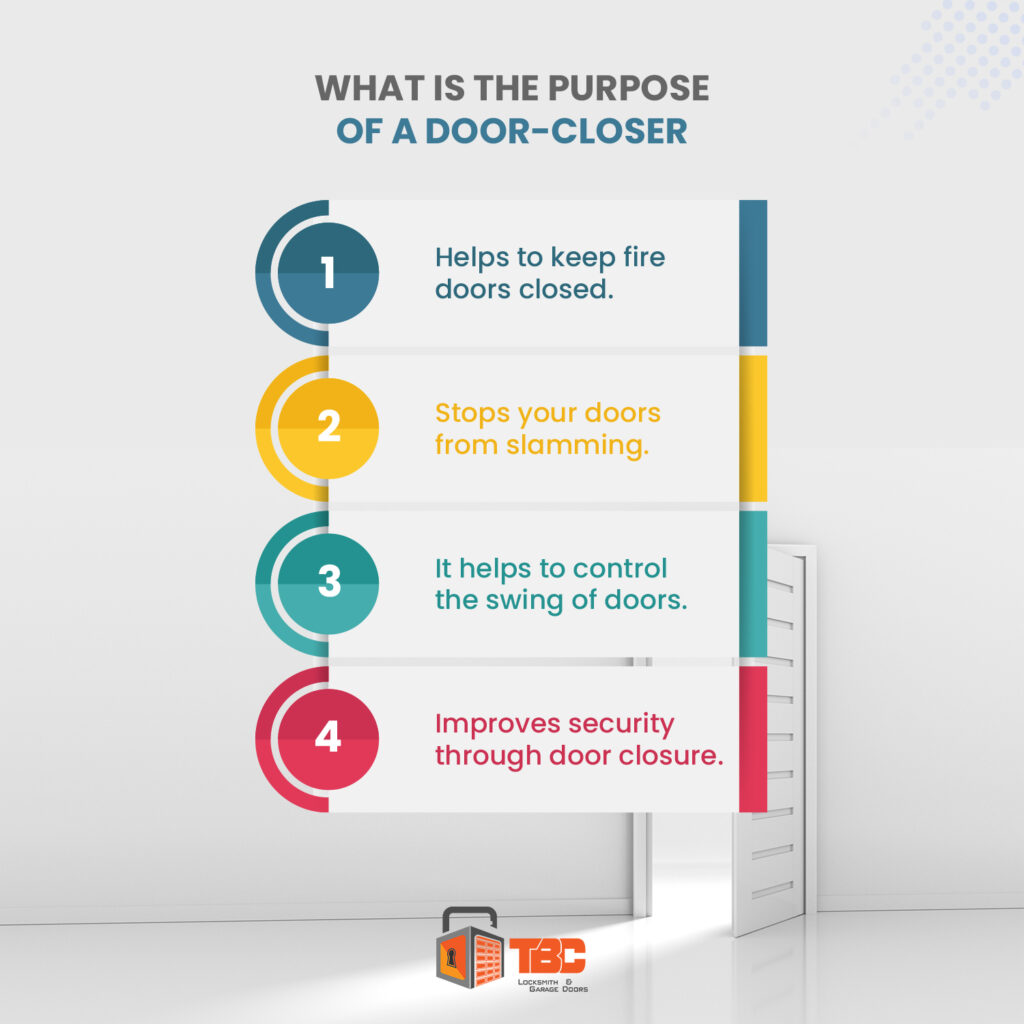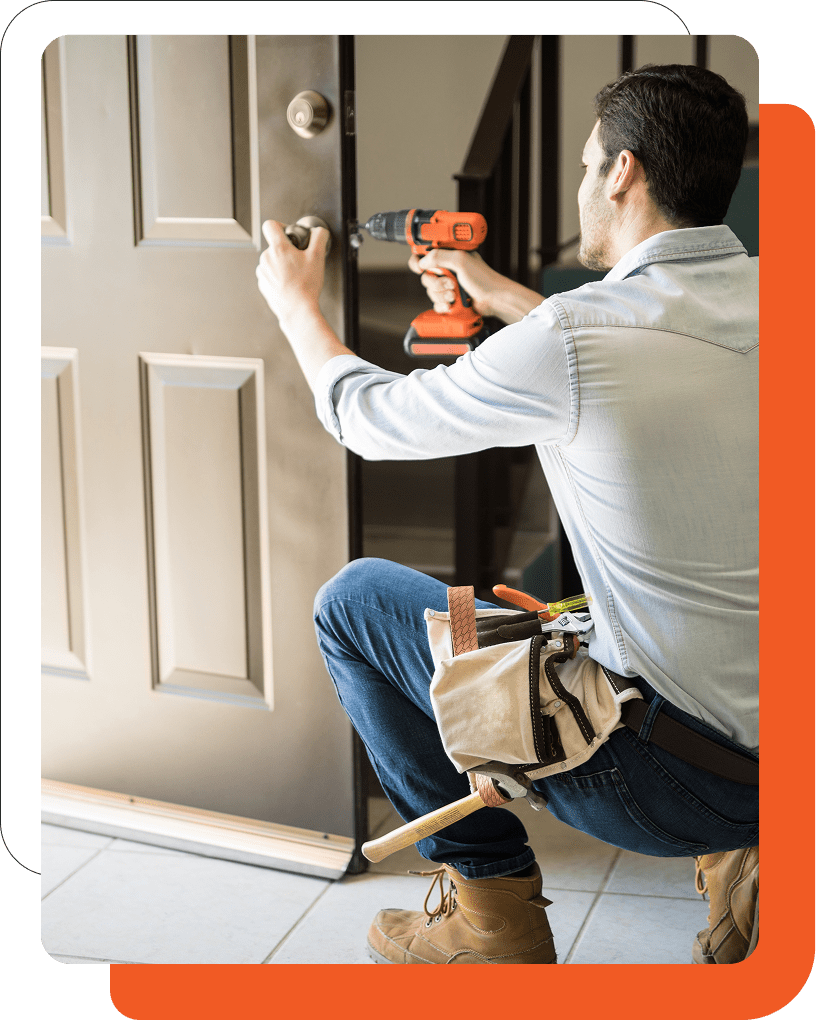
Most people are familiar with door openers, but do you know what a door-closer is? In this article, discover all you need to know about door closers and if you need to get one installed.
What is a Door Closer?
A door closer is a spring-loaded, adjustable mechanical arm that automatically closes after it has been opened. Door closers are usually filled with hydraulic fluid, which causes the door swing to dampen while controlling its operation. The installation of a door-closer improves the level of security and safety of your door.
What is the Purpose of a Door-closer?

Door closers perform various functions. They are installed for various purposes, with safety being first on the list. Here are some of the purposes for the installation of a door closer:
It helps to keep fire doors closed
Fire doors need to remain closed at all times. Doors with a fire rating will let you safely exit the property while keeping the fire and smoke away. If there is no door closer, the fire protection mechanism is compromised. A fire door that doesn't latch completely can result in an unsafe stairwell or passageway, leading to loss of life and property in the event of a fire.
It stops your doors from slamming
Door closers ensure that there is a controlled closure of the door. The damper keeps the speed and force of the door at a certain level. This is very necessary when heavy doors and vulnerable people are involved.
For instance, door closers prevent small children who may not resist the weight of the door from getting injured. If you do not move quickly enough, the door can slap against your fingers, injuring you. People carrying cargo such as multiple bags also enjoy the benefit of door closers. Door closers promote accessibility and prevent injury by stopping door slams.
It helps to control the swing of doors.
Many door closers are fitted with a backcheck function that prevents doors from opening too fast. A backcheck is used to slow or even stop the door at some point of its opening swing.
When uncontrolled, the opening swing of doors can be dangerous, such as during heavy winds or bad weather. Certain people can also throw the doors open violently on purpose. Doors that are blown wide open can damage their adjacent walls, door frame and other property. If you are unlucky to be standing near the doorway, a swinging door can cause serious bodily injury to you as well.
Improves security through door closure
A door-closer introduces a new layer of security to a property. Since it secures the door shut after someone goes through it, your door won't remain open for intruders to come in. You do not have to worry about leaving your premises open for unauthorized persons to gain access to.
How Many Types of Door Closers Are There?
Some of the most common types of door closers available include:
- Surface-mounted
- Concealed in-frame
- Concealed in-door
- Concealed in-floor
Surface-mounted door closer
This type of door-closer is the most common. Surface-mounted closers are easy to install and comparatively cost-effective. You will usually find them fitted to the door frame, right behind the door and next to the hinges. The arm of the door closer is designed to retract as the door is closed.
Concealed door closer
Concealed door closers are normally installed within the door jamb. They are the go-to option when the aesthetics of the door are an important factor. These door closers fit in the corticoid recessed of the door and frame, allowing it to be completely concealed when the door is closed.
Floor door closers
These door closers are similar to concealed door closers and are not visible when the door is opened. A bar is fitted into the underside of the door, controlling the closing action. It usually has an open setting that allows the doors to be left open. Floor door closers are typically used with pivot hinges instead of butt hinges. Pivot hinges are a more durable and strong option.
How Do I Repair My Door-closer?

To repair your door closer, there are a few steps to note. Most times, a broken door-closer follows a particular pattern. Here are the procedures to follow when repairing your door closer.
Inspect the hydraulic arm
The most common issue most door closers have is arm control. If you have a top-mounted unit, it can get bent, or the inside bar on straight units may not hold the vacuum as soon as they get rusty.
Begin by checking the arm to see if it moves freely without effort. If the arm isn't moving or is frozen in position, it could result from the pressure screw being too tight or due to lack of lubrication or obstruction. Ensure that the arm is not snagged on anything, such as a solid object impairing its movement or a screw sticking up. For sliding shafts, it could be that the catch is in a locked position, preventing it from closing. Move the catch, and it should function properly. If you notice that the arm is rusty, apply lubricant. With higher-quality top arm units, you will find a valve where a grease gun can be hooked for lube application.
Check the air pressure release valve
With every hydraulic door closer unit, you will find a small screw located in the back to adjust the amount of air pressure released or incoming. Try to adjust this to check for functionality. If this does not help to free up the movement of the arm, there is a chance that it has seized and requires a replacement.
If you take out the unit and prevent the arm from moving in or out, you might try freeing it up using a rust remover before applying lubrication. At times, the arm may simply be stuck from prolonged exposure to elements, causing it to seize up. You can fix this by dismounting the device and lubricating its joints until it moves freely again.
Inspect the arm for hitches or snags
Inspect the hydraulic door closer and ensure that nothing is obstructing the movement of the unit. The unit is driven on air pressure and a gravity pull system, making it easy for the unit to fail even with minimal interference. You can take out the unit and test it off the door to ensure that all the parts are moving properly. If lube and rust removal does not fix the problem, there is a possibility that the chamber has experienced internal damage and may need to be replaced.
You can save yourself the stress of trying to figure out what is wrong with your door closer by simply contacting a professional locksmith Toronto.
Can I Adjust the Tension On My Door Closer?
To adjust the tension on your door closer, you will need the following tools:
- Hex key
- Step ladder
- Screwdriver
STEP 1
Take off the cover. The covers are usually held on by tension, but you can find the fastens holding it down and pop it off. As soon as the cover is off, you can find the adjustment screws. If you are in luck, you will notice markings indicating what they are or a diagram inside the cover. If this is not the case, you might need to experiment a bit to discover which.
STEP 2
Bear in mind that when it comes to turning the door closer adjustment screws, less is more. Begin with not more than ⅛ of a turn. Turn the adjustment screw clockwise to delay the door closer and anti-clockwise to speed it up. Get off your ladder and observe the effect.
STEP 3
Finally, open the door and watch it close. If it closes the first time correctly, check it a couple more times. If it closes exactly as you want, it will probably continue to do the same.
How Much Does a Door Closer Cost?
Installing a door closer usually costs between $60 to $100. This pricing does not include the cost of supplies and materials necessary for a door-closer installation.
Conclusion
If you are in Toronto or the GTA and need to get a professional locksmith Toronto , check out TBC Locksmith. We provide expert solutions to every locksmith need you might have.
Our services include lock installation and repair, top-notch door repairs, transponder keys, and relaying new locks. We are available 24/7 with a 15-30 minute response time. You can trust us for both your regular and emergency services









